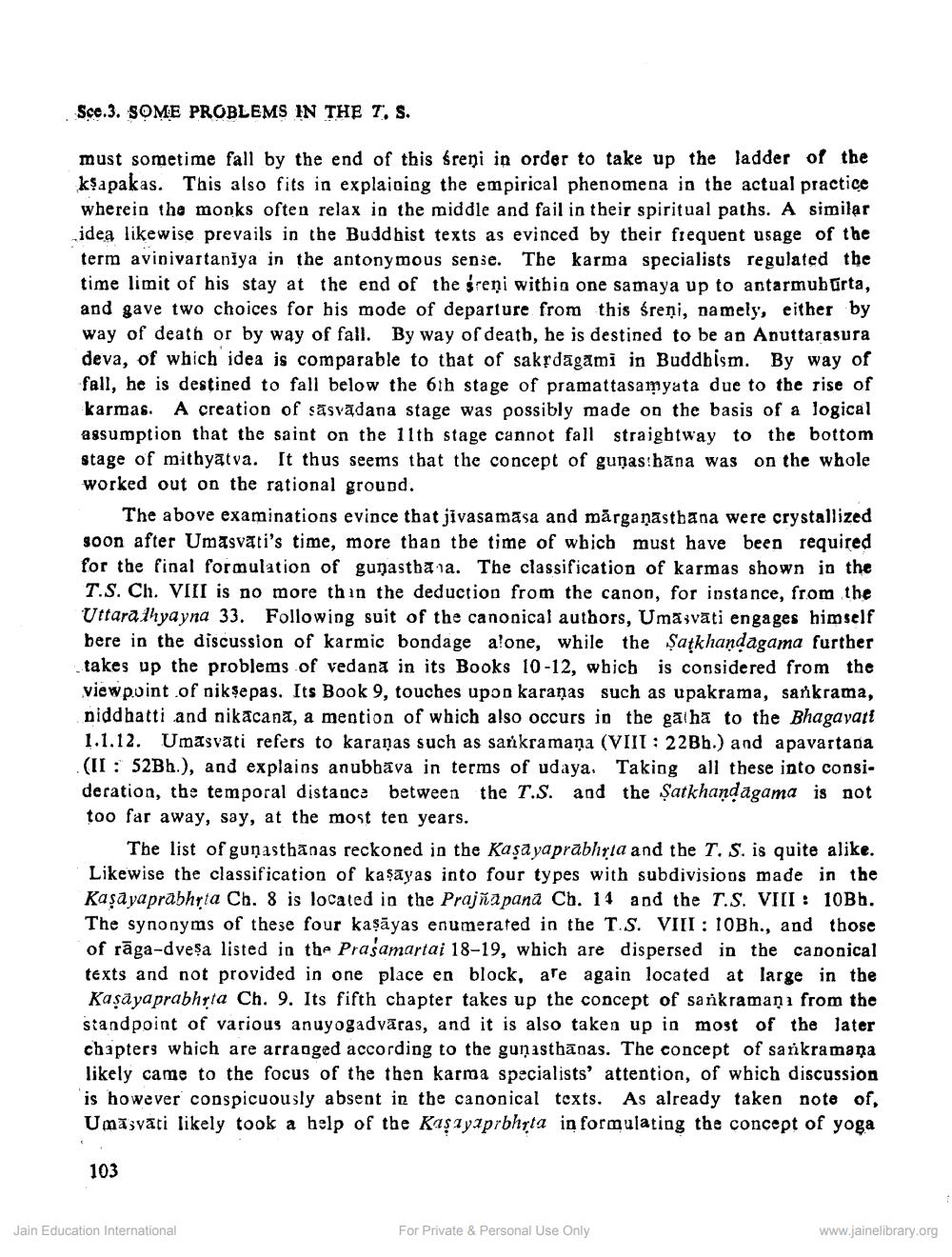________________
Sce.3. SOME PROBLEMS IN THE T. S.
must sometime fall by the end of this freni in order to take up the ladder of the ksapakas. This also fits in explaining the empirical phenomena in the actual practice wherein the monks often relax in the middle and fail in their spiritual paths. A similar idea likewise prevails in the Buddhist texts as evinced by their frequent usage of the term avinivartaniya in the antonymous sense. The karma specialists regulated the time limit of his stay at the end of the śreņi within one samaya up to antarmubarta, and gave two choices for his mode of departure from this śreņi, namely, either by way of death or by way of fall. By way of death, he is destined to be an Anuttarasura deva, of which idea is comparable to that of sakrdagami in Buddhism. By way of fall, he is destined to fall below the 6th stage of pramattasamyata due to the rise of karmas. A creation of sāsvādana stage was possibly made on the basis of a logical assumption that the saint on the 11th stage cannot fall straightway to the bottom stage of mithyatva. It thus seems that the concept of guņas hāna was on the whole worked out on the rational ground.
The above examinations evince that jivasamasa and märganastbana were crystallized soon after Umasväti's time, more than the time of which must have been required for the final formulation of gunastbana. The classification of karmas shown in the T.S. Ch. VIII is no more than the deduction from the canon, for instance, from the Uttara lhyayna 33. Following suit of the canonical authors, Umāsvāti engages himself bere in the discussion of karmic bondage alone, while the Şaškhandagama further takes up the problems of vedana in its Books 10-12, which is considered from the viewpoint of niksepas. Its Book 9, touches upon karanas such as upakrama, sarikrama, niddhatti and nikacana, a mention of which also occurs in the gatha to the Bhagayati 1.1.12. Umasvati refers to karanas such as sankramaņa (VIII: 22Bh.) and a pavartana (II : 52Bh.), and explains anubhāva in terms of udaya. Taking all these into consideration, the temporal distance between the T.S. and the Satkhaņdāgama is not too far away, say, at the most ten years.
The list of guņasthānas reckoned in the Kaşa yaprabhria and the T. S. is quite alike. Likewise the classification of kasāyas into four types with subdivisions made in the Kaşa yaprabhyta Cb. 8 is located in the Prajñapana Ch. 14 and the T.S. VIII : 10Bh. The synonyms of these four kaşāyas enumerated in the T.S. VIII: 10Bh., and those of rāga-dveļa listed in the Prasamartai 18-19, which are dispersed in the canonical texts and not provided in one place en block, are again located at large in the Kaşāyaprabhyta Ch. 9. Its fifth chapter takes up the concept of sankramaņı from the standpoint of various anuyogadvāras, and it is also taken up in most of the later chapters which are arraaged according to the guṇasthānas. The concept of sarikramana likely came to the focus of the then karma specialists' attention, of which discussion is however conspicuously absent in the canonical texts. As already taken note of, Umājvāti likely took a help of the Kasay?prbhrta in formulating the concept of yoga
103
Jain Education International
For Private & Personal Use Only
www.jainelibrary.org




